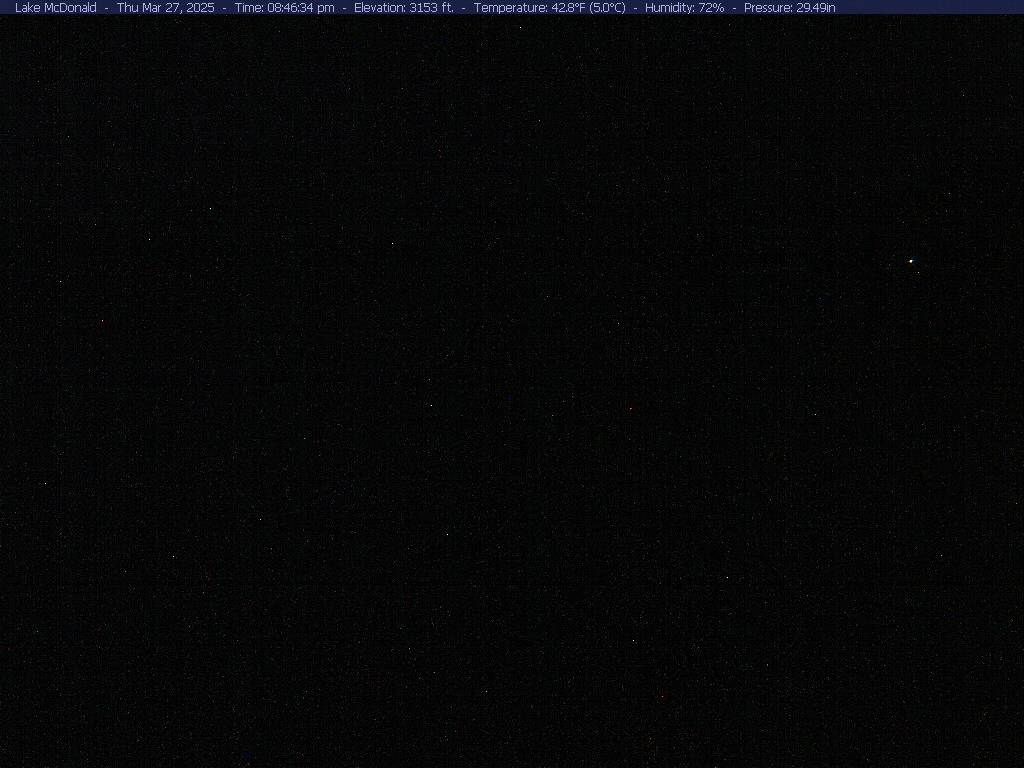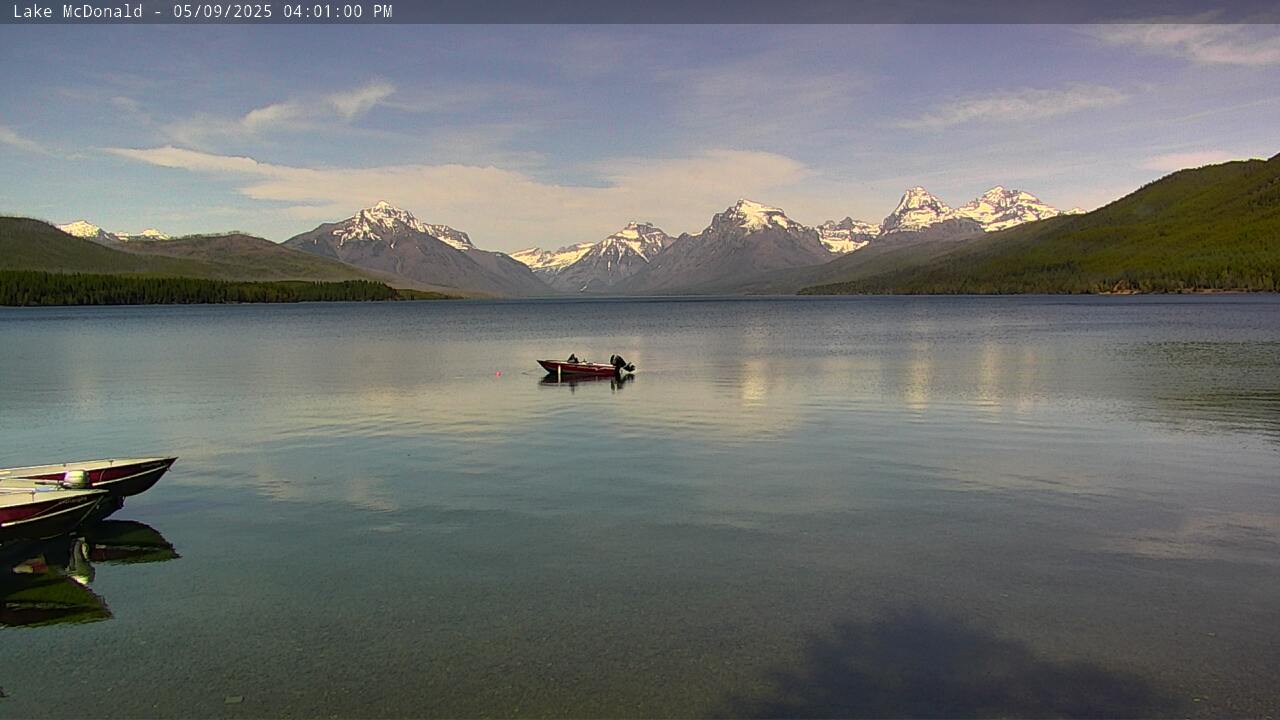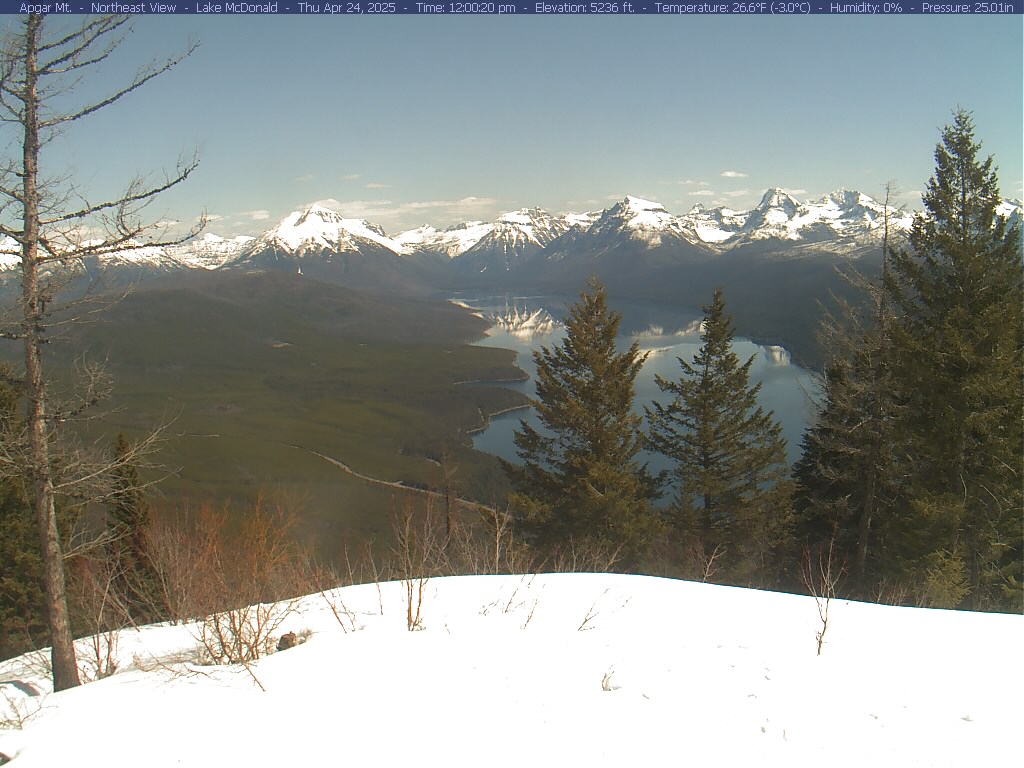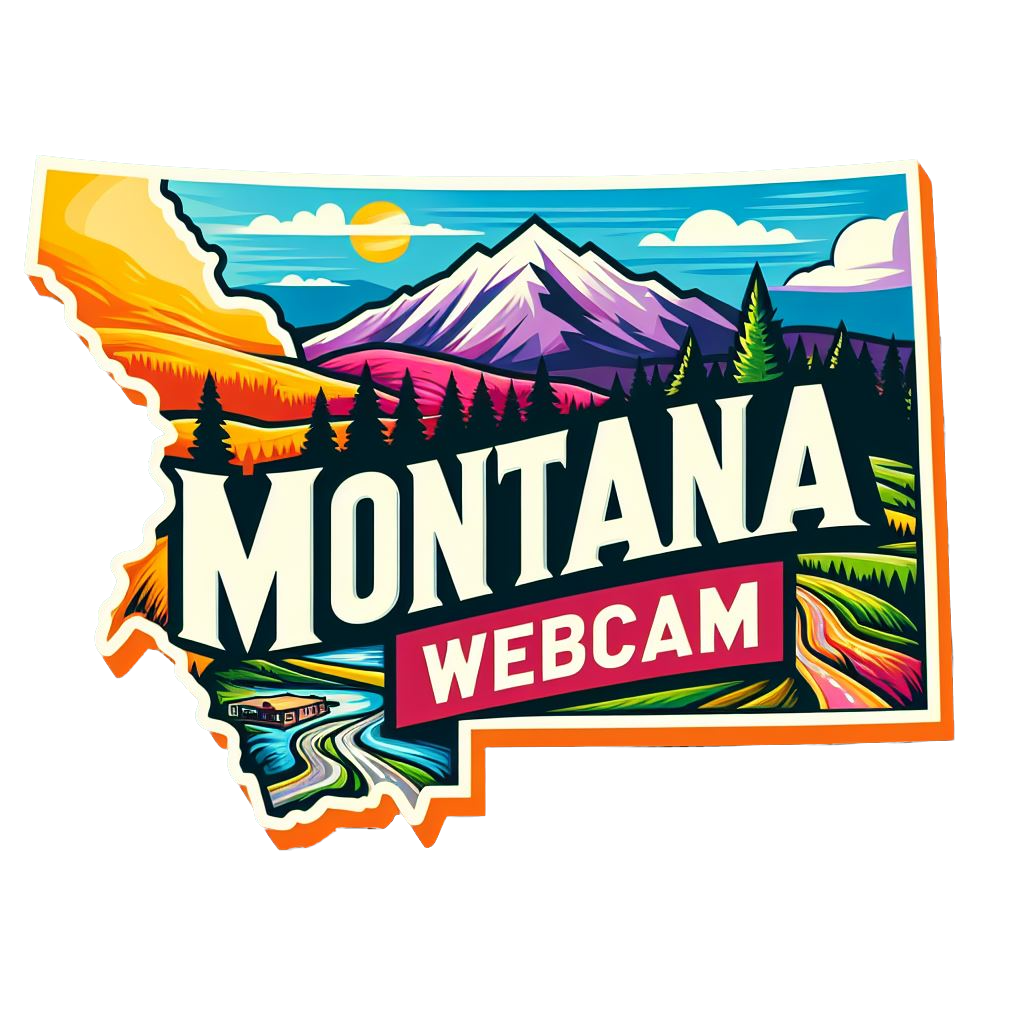Lake McDonald, MT Weather Cams
Lake McDonald, MT Weather Cams
Lake McDonald Cam 1

Lake McDonald Cam 2

Apgar Mountain Cam

Lake McDonald, Montana: Jewel of Glacier National Park
Lake McDonald, MT Weather Cams. Nestled amid the majestic peaks and pristine wilderness of Glacier National Park in Montana, Lake McDonald is a shimmering gem that has captivated visitors for generations. With its crystal-clear waters, dramatic mountain vistas, and abundant wildlife, Lake McDonald is not only a breathtaking natural wonder but also a place steeped in history and rich with stories of exploration, adventure, and conservation.
Indigenous Legacy
Long before European settlers arrived in the region, the area around Lake McDonald was inhabited by indigenous peoples, including the Blackfeet, Salish, and Kootenai tribes. For these tribes, the lake and its surrounding landscapes held deep spiritual significance, with the shimmering waters and towering peaks serving as sources of inspiration, sustenance, and connection to the natural world.
The indigenous peoples of the region relied on the lake for fishing, hunting, and gathering, and they developed a deep understanding of its rhythms and cycles. Lake McDonald was a place of gathering and ceremony, where tribes came together to celebrate, trade, and commune with nature.
Exploration and Discovery
The first recorded European exploration of Lake McDonald occurred in the mid-19th century, as fur trappers and traders ventured into the wilderness of the Rocky Mountains in search of valuable pelts. These early explorers marveled at the beauty and grandeur of the lake, but it wasn’t until the late 19th century that Lake McDonald began to attract widespread attention.
In 1891, the Great Northern Railway completed its transcontinental line through the northern Rockies, opening up the region to tourists and adventurers from across the country. Lake McDonald quickly became a popular destination for travelers seeking to experience the wonders of the wilderness firsthand.
Establishment of Glacier National Park
The creation of Glacier National Park in 1910 further elevated Lake McDonald’s status as a premier destination for outdoor recreation and exploration. The park, which encompasses over a million acres of pristine wilderness, was established to protect the natural beauty and ecological integrity of the region for future generations.
Lake McDonald, with its stunning vistas, clear waters, and diverse wildlife, became one of the park’s most iconic landmarks. Visitors flocked to the lake to hike its scenic trails, paddle its tranquil waters, and immerse themselves in the sights and sounds of the wilderness.
Tourism and Development
The early 20th century saw a surge in tourism and development around Lake McDonald, as hotels, lodges, and campgrounds sprung up to accommodate the influx of visitors. The construction of the Going-to-the-Sun Road in the 1920s further enhanced accessibility to the lake and other scenic attractions within the park.
The Lake McDonald Lodge, built in 1913, quickly became a popular gathering place for travelers, offering rustic accommodations, fine dining, and guided excursions into the surrounding wilderness. The lodge’s iconic Swiss chalet-style architecture and historic charm continue to attract visitors to this day.
Conservation Efforts
As visitation to Glacier National Park increased, concerns arose about the impact of human activities on the park’s fragile ecosystems. Efforts to preserve and protect Lake McDonald and its surrounding landscapes became a top priority for park officials, conservationists, and local residents.
In 1932, Lake McDonald Lodge was designated as a National Historic Landmark, recognizing its architectural significance and cultural heritage. The lodge underwent extensive renovations in the 1980s to restore its historic character and ensure its preservation for future generations.
Threats and Challenges
Despite efforts to conserve Lake McDonald and its surrounding ecosystems, the lake faces ongoing threats from climate change, invasive species, and other environmental pressures. Warming temperatures have led to shrinking glaciers, reduced snowpack, and altered precipitation patterns, affecting water levels and water quality in the lake.
Invasive species such as non-native fish and aquatic plants pose additional challenges to the lake’s ecological balance, threatening native species and disrupting fragile ecosystems. Efforts to monitor and mitigate the impacts of these threats are ongoing, but continued vigilance and cooperation are needed to ensure the long-term health and vitality of Lake McDonald.
Recreational Opportunities
Today, Lake McDonald continues to attract outdoor enthusiasts with its wide range of recreational opportunities. Hiking, camping, fishing, boating, and wildlife viewing are popular activities, offering visitors a chance to experience the beauty and diversity of the lake and its surrounding landscapes.
The lake’s scenic shoreline is dotted with campgrounds, picnic areas, and hiking trails, providing opportunities for visitors to immerse themselves in the sights and sounds of nature. Guided boat tours and ranger-led programs offer insights into the lake’s natural and cultural history, while interpretive exhibits and visitor centers provide educational resources for curious minds.
Legacy and Inspiration
Lake McDonald’s legacy as a symbol of natural beauty and wilderness preservation continues to inspire people from all walks of life. Artists, writers, photographers, and filmmakers have drawn inspiration from its stunning vistas and serene landscapes, capturing its essence in paintings, poems, and documentaries.
For generations, Lake McDonald has served as a place of wonder, discovery, and contemplation, inviting visitors to connect with the natural world and experience the magic of the wilderness. As the crown jewel of Glacier National Park, Lake McDonald remains a timeless treasure, cherished by all who have had the privilege to behold its splendor.
For more information, visit the official Lake McDonald, MT website.
Lake McDonald, MT Weather Cams
See more webcams from national parks in Montana here.
